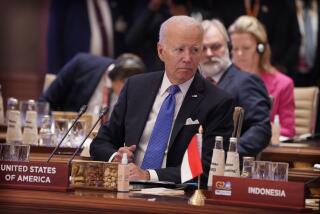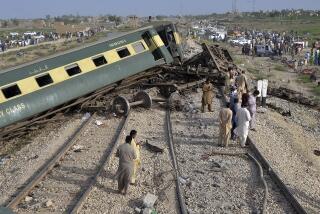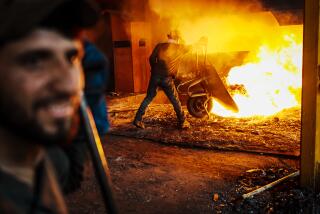China’s dream of a new Silk Road runs into hurdles at its first stop: Pakistan
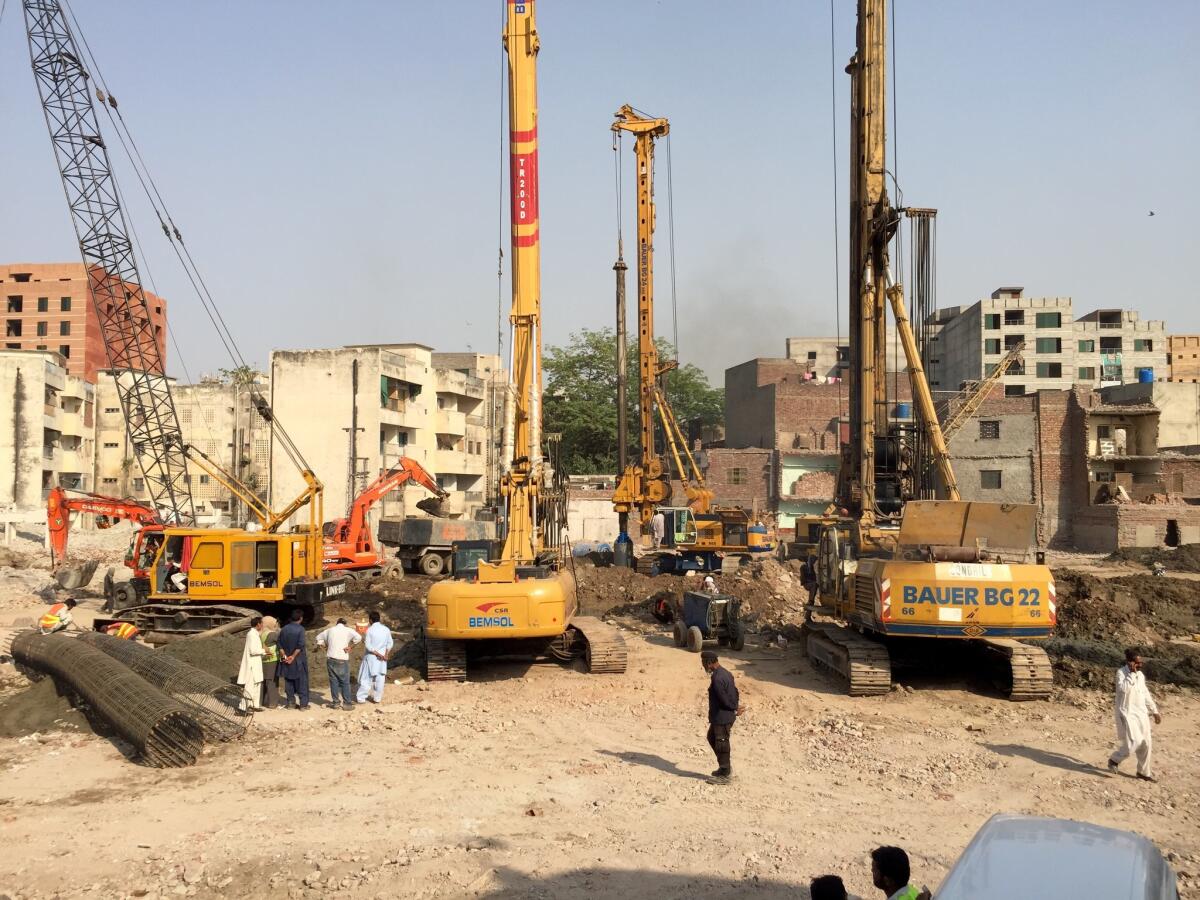
Reporting from Lahore, Pakistan — Families were still at home when the bulldozers came. Children were returning from school exams. The residents of nearly 80 apartments were given hours to vacate Postal Colony — housing allotted to low-level postal workers — to make way for a new metro train station.
In a chaotic evacuation before the twin tenements were razed, residents pelted stones at police. Witnesses said one woman choked to death when her scarf got caught in the wheels of a moving rickshaw.
The mid-March scene in central Lahore, Pakistan’s second-largest city, exemplified a growing outcry over a light-rail project that is being touted as a symbol of Pakistan’s economic development and its friendship with the financier, China.
The $1.6-billion Orange Line is one of the first major overseas infrastructure projects China is financing under President Xi Jinping’s vision of forging a modern Silk Road.
The ambitious plans for an economic conduit from the western Chinese hinterlands through Central Asia, the Middle East and Europe — mirroring the trade route once traversed by Marco Polo — begin in Pakistan, a cash-starved neighbor that has long been one of Beijing’s most reliable allies.
Chinese state-owned banks and industries have begun handing out $46 billion in investments to improve Pakistan’s roads and railways, develop several major power plants, create industrial zones and construct a massive new deepwater port on the Arabian Sea.
NEWSLETTER: Get the day’s top headlines from Times Editor Davan Maharaj >>
The China-Pakistan Economic Corridor represents Beijing’s biggest foreign development initiative and a direct challenge to India, Pakistan’s chief rival and the resident power in South Asia.
In Pakistan, it also has raised concerns over a lack of oversight in projects like the Orange Line, the first such mass transit system in the country.
Activists have filed lawsuits accusing the government of bypassing transparency laws, not fairly compensating evicted residents and ignoring the health and environmental effect of carving a 17-mile train track — nearly all of it above ground — through some of Lahore’s oldest and most densely populated neighborhoods.
Judges have blocked construction near 11 shrines, churches and historical sites. Yet the demolitions of Postal Colony and other adjacent properties continue. The chief minister of Punjab province, Shehbaz Sharif, promises the train will be completed by the end of 2017 — months before his brother, Prime Minister Nawaz Sharif, faces reelection.
In one closed-door meeting last fall, train opponents say a senior Punjab official accused them of threatening the China-Pakistan friendship, which he described as tantamount to treason.
“No other country in the world would have helped us so much,” Shehbaz Sharif said recently.
As China’s leaders try to manage an economic slowdown that has dimmed domestic demand for its industries, Pakistan presents a rare opportunity: an economically struggling nation of nearly 200 million people that is eager to let Chinese companies come in and build infrastructure.
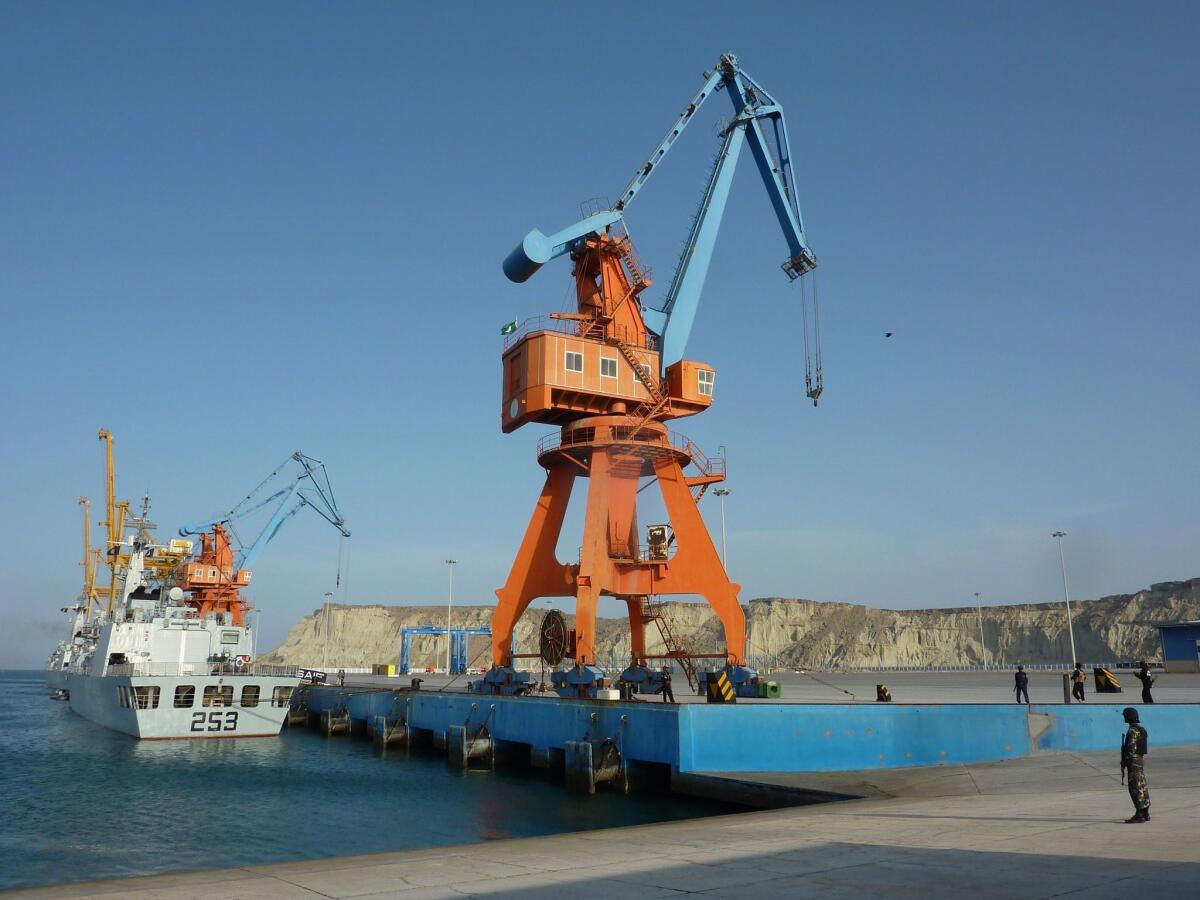
The port at Gwadar — a sleepy desert fishing town that optimistic Pakistani officials imagine as another Dubai — was handed over to a state-owned Chinese company in November. The economic corridor calls for a transportation network linking the western Chinese region of Xinjiang to the port, which would slash shipping times to Europe and could reduce Beijing’s heavy reliance on the sea lanes of Southeast Asia.
At least 14 Chinese-built power plants are slated to start churning out 10,400 megawatts of electricity within the next two years to ease Pakistan’s chronic brownouts. The country currently generates about 24,000 megawatts — less than the tiny South Pacific island of Vanuatu.
------------
FOR THE RECORD
This article incorrectly states that Pakistan generates less electricity than Vanuatu. Vanuatu generates far less electricity than Pakistan.The CIA World Factbook, on which that assertion was based, incorrectly lists Pakistan below Vanuatu.
------------
The corridor is “a project of mutual importance,” said Mohammed Nadeem Javaid, chief economist in Pakistan’s planning ministry. “It provides us breathing space and helps with our energy requirements. And what we give them is the shortest possible route to transport goods to the rest of the world.”
Pakistani officials have said the corridor will ignite industrialization in underserved areas such as Baluchistan province, where Gwadar is located. But security concerns in the province — home to a long-running separatist movement — and a desire for quick results have prompted both countries to shift more projects to Punjab, already the most developed part of the country and the Sharifs’ political power base.
Experts wonder whether the corridor will create jobs or breed white elephants — mammoth installations disconnected from needy areas.
See more of our top stories on Facebook >>
“If they don’t improve road connectivity, upgrade towns along the way and find a way to provide technical skills, the local people will do nothing more than repair the punctures on Chinese tires,” said Kaiser Bengali, an economist who has advised the Baluchistan government.
Long beset by corruption, terrorism and political instability, Pakistan has never seen so much foreign investment. And China has a history of over-promising: Of $66 billion in aid it pledged to Pakistan from 2003 to 2011, only 6% ever came, according to a Rand Corp. study.
For now, however, both governments appear enthusiastic about the partnership. In April, Shehbaz Sharif hosted senior officials from China Railway and China North Industries Corp., the state-owned companies leading construction on the Orange Line.
No other country in the world would have helped us so much.
— Punjab Chief Minister Shehbaz Sharif, on Chinese investment in Pakistan
Billed as a solution to traffic woes in a city of 9 million people with only one other rapid transit system — a bus line — the train was not among the original initiatives for the corridor. It was added to the list after concerted lobbying by Sharif, who described it in April as “another gift from the government for the people” and “a model of transparency.”
He did not mention that China’s Export-Import Bank was financing most of the cost at interest rates that have not been officially disclosed — or that the project has faced serious opposition.
Demolitions began in August, four months before the loan was approved, triggering protests and lawsuits. In hearings before the Lahore High Court, Punjab officials have defended the project but declined to reveal basic details, including loan terms, citing its “sensitivity.”
Judges have at times responded with impatience. At a hearing in April, Judge Shahid Karim said the train “displaces millions of people and affects their vocations and livelihoods, yet their pertinent concerns were simply ignored.”
A judgment in the case is pending.
Analysts say operating the train — which will carry an estimated 250,000 riders daily in its first year — will require huge government subsidies. But its completion is seen as crucial to Prime Minister Sharif’s reelection bid.
“The government wants the train to be physically visible, and they want it to be done before the next election,” said Maryam Hussain, an activist and associate professor at the National College of Arts in Lahore. “But transparency takes a bit longer.”
In the past, China might have been deterred by such local controversies, but in this case, the allies’ goals are aligned, said Andrew Small, author of “The China-Pakistan Axis: Asia’s New Geopolitics.”
“China is pushing extremely hard for these projects to be turned around quickly,” Small said. “The fact that you have some additional political momentum in Pakistan to get some big, demonstrable projects done before the election in 2018 — I’m not sure China minds.”
There are greater concerns next door in India about expanding Chinese influence in the region. The world’s two most populous countries, both with growing economies, are jockeying for supremacy in Asia.
Kanwal Sibal, a former Indian foreign secretary, described the economic corridor as “a political and strategic provocation.”
Indian strategic planners worry that the Chinese navy intends to establish a base at Gwadar, which lies between India and the Persian Gulf. Indian officials were alarmed two years ago when the former government in Sri Lanka allowed a Chinese submarine and warship to dock less than 200 miles from Indian shores.
New Delhi has protested China’s plans to build a highway through the Pakistani-controlled portion of Kashmir, the disputed Himalayan territory that both India and Pakistan claim in its entirety. It also worries about the role of the Pakistani army, which has deployed 2,000 soldiers to protect Chinese workers at Gwadar, and whose intelligence apparatus India accuses of supporting cross-border terrorism.
“There is a concern in India that as China becomes more dependent on the Pakistani military for ensuring the security of these projects, that will give the Pakistani military more sway,” said Tanvi Madan, India project director at the Brookings Institution in Washington.
Some view India’s decision to pour $500 million into developing Chabahar, a port in Iran, as partly a response to Gwadar.
A more sanguine reading of China’s role is that it will push Pakistan to promote regional peace and fulfill pledges to crack down on Taliban militants waging war in neighboring Afghanistan.
“The sheer scale of investment means … China will certainly have to care about things like political stability, development and security in general in Pakistan than they ever have before,” Madan said.
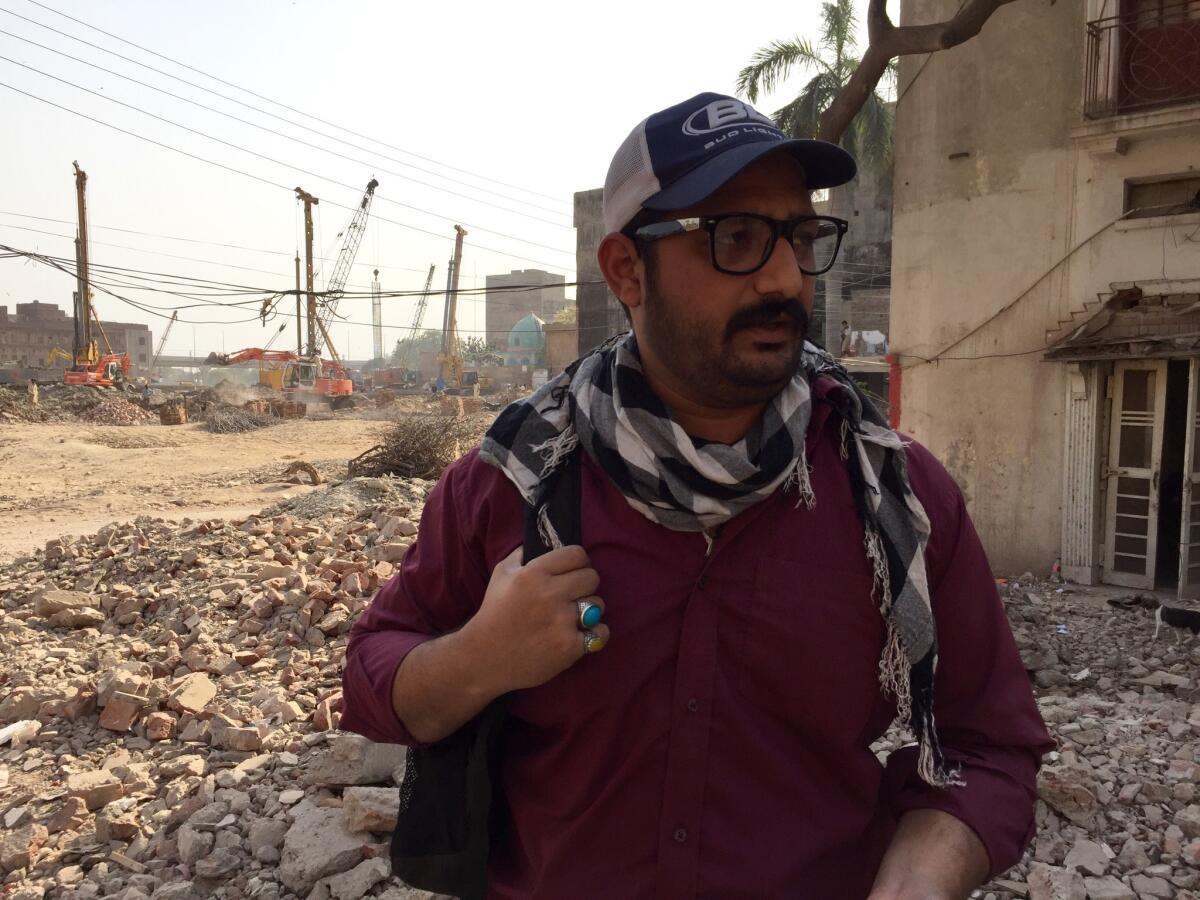
Privately, top Indian officials are skeptical that the corridor’s grandiose promises will be realized. Its effect is more closely felt by Pakistanis like Ali Rashid, whose home inside 19th century Kapurthala House in central Lahore was set to be demolished to build an Orange Line station.
A court order has blocked demolition of the building, which houses the descendants of families who fled to Pakistan from what is now India when the countries were partitioned in 1947.
The structure now lies in the middle of a crater, encircled by the rubble of bulldozed apartments and shadowed by towering cranes.
Of 52 families who lived there, all but two have left. Rashid’s family holds out, unwilling to accept the government’s offer of about $30,000 in compensation, which it says is insufficient to buy another home in Lahore.
“They keep saying this is a gift from China,” Rashid said. “All I see is destruction everywhere.”
ALSO
Pakistani transgender activist who was shot, then taunted at hospital, dies of injuries
Food prices at Shanghai Disneyland give early visitors heartburn
More Indian states are banning liquor, although that hasn’t stopped the drinking
Follow @SBengali on Twitter for more news from South Asia.
More to Read
Sign up for Essential California
The most important California stories and recommendations in your inbox every morning.
You may occasionally receive promotional content from the Los Angeles Times.
